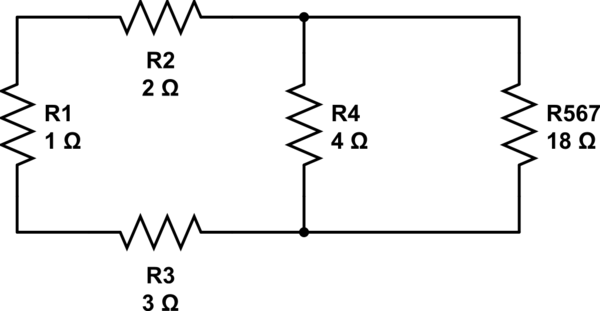Have you covered equivalent resistances? Essentially, it is a way to combine resistors in series or parallel until you get a single resistance, working your way from out to in.
Let's say you want to find \$R_{AB}\$.
First, your have a series combination \$R_5\$, \$R_6\$, and \$R_7\$.
$$
R_{5,6,7} = R_5 + R_6 + R_7 = 18 \Omega
$$

simulate this circuit – Schematic created using CircuitLab
Now you have a parallel combination between \$R_4\$ and \$R_{5,6,7}\$.
$$
R_{4,5,6,7} = \frac{R_4 \cdot R_{5,6,7}}{R_4 + R_{5,6,7}} = 3.27 \Omega
$$

simulate this circuit
You are almost done! Now, since you are looking for the equivalent resistance between A and B, you have a series combination for \$R_2\$, \$R_3\$ and \$R_{4,5,6,7}\$:
$$
R_{2,3,4,5,6,7} = R_2 + R_3 + R_{4,5,6,7} = 8.27 \Omega
$$

simulate this circuit
Last Step!
You have a parallel combination between \$R_1\$ and \$R_{2,3,4,5,6,7}\$:
$$
R_{AB} = \frac{R_1 \cdot R_{2,3,4,5,6,7}}{R_1 + R_{2,3,4,5,6,7}} = 0.892\Omega
$$




